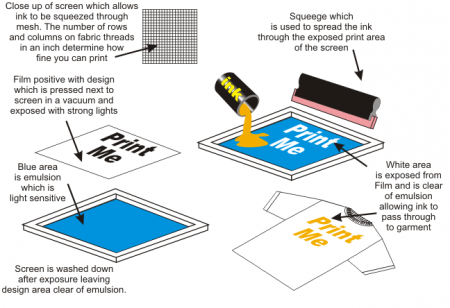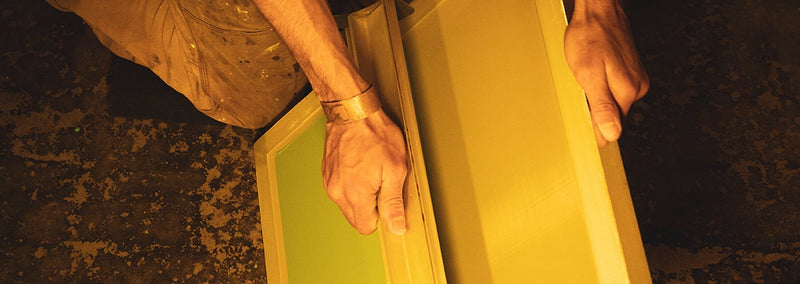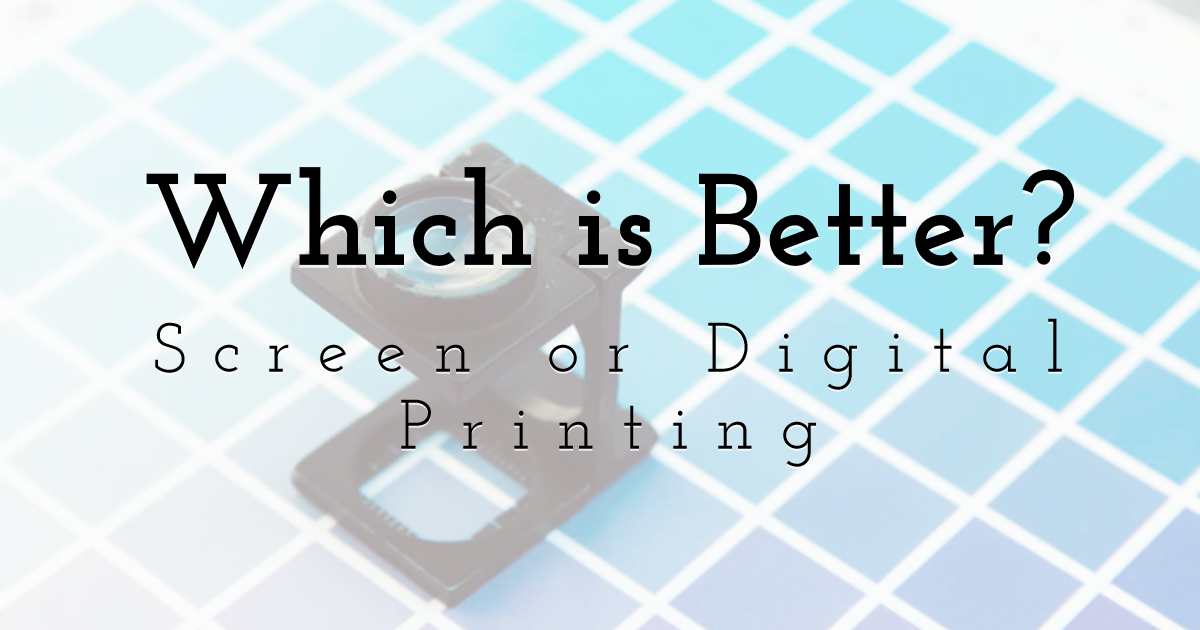Getting My Tx Tees To Work
Getting My Tx Tees To Work
Blog Article
A Biased View of Tx Tees
Table of ContentsThe Of Tx TeesUnknown Facts About Tx TeesOur Tx Tees PDFsTx Tees for BeginnersThe 45-Second Trick For Tx TeesAll About Tx TeesTx Tees for Beginners
That brings your overall to about $1,900 gross and shipping. Add up various other expenses, like the number of energies it requires to run the shop and the cost of ink and solution per style. screen printing shop. Take the print below. This is a one-color image, so the price of ink per t shirt is around 20 cents.The solution must only be a couple of cents given that you 'd only need to layer one display for this job. How much should you bill per shirt to make a revenue? Usually, printers try to make up to 45% profit on a print task. Below's a table to help you figure out that: total cost per product percent of wanted profit as a decimal (example:.25 or.45) earnings made per product per job Now let's discuss the productivity of DTF.

With DTF, you can print a handful of tee shirts, or simply one. Both screen printing and DTF have their particular niches in the world.
Tx Tees Fundamentals Explained
The very best means to know? Ask around and see what print shops like your own are doing. custom t-shirt design. Attempt both out and see which you like better
When you're selecting what sort of printing method to use for publishing your art work layouts on your garments, it is necessary that you recognize the differences between these two methods so you can maximize results while decreasing prices. Screen printing is the most frequently made use of technique for printing designs on textiles.
DTG printing is likewise referred to as place or straight to garment printing since it publishes only what is needed rather than making a screen as screen printers do. https://issuu.com/txtees02. Screen printing functions by screen filler squeegee screen printing ink display mesh screen, after that transferring the photo to garment utilizing warmth and/or pressure
The DTG printer makes use of special dye-sublimation inks that are used into a pre-designed picture by a digital printing system. The inks come to be part of the textile, permitting vibrant shades and outstanding detail. It's also called spot or straight to garment printing because it prints just what is needed rather than making a screen as display printers do.
What Does Tx Tees Do?
It's much quicker - you can publish a fullcolor image in minutes, as opposed to hours for display printing. Second, there's no set up time or prices involved - you can publish any layout you like, without needing to create a screen first. Third, there's no waste - since display printers screen print one style each time, they have to screen each color separately.
The paper is very costly and can only be used when. Once it's printed on, it needs to be discarded. - The preliminary acquisition rate is less than the ahead of time financial investment of DTG printers- You can publish multi-color styles one screen at a time instead of having to publish each shade individually like DTG printing.

Some Of Tx Tees
Instead of making use of display mesh as display printers do, dye sublimation printers utilize laser modern technology to transfer your pictures onto garments or paper. A warm procedure transfers the dye from its solid-state straight right into the gas phase which consequently look at this website integrates it onto textile substrates when they are quickly warmed to high temperature levels under high stress.
Sublimation printing is environment-friendly. It makes use of less water than screenprinting, and since it does not include the usage of hazardous solvents, it's risk-free for all sorts of garments. The color sublimation inks are additionally odorless when cured, unlike screen printers that utilize dangerous chemicals throughout the display printing procedure that leave behind an unpleasant smell.
They additionally conserve money on costly devices like direct exposure units considering that dye sublimation printers don't require a UV exposure device or a flash cure oven that is generally made use of in screen printing (screen printer). What is straight to garment printing (DTG Printing)? DTG printing is an electronic screenprinting procedure that publishes straight onto material utilizing specialized inkjet printers
Rumored Buzz on Tx Tees
DTG printing supplies lots of benefits over traditional screenprinting, consisting of the capacity to print photo top quality pictures, better shade vibrancy, and the ability to publish styles on darker fabrics. DTG printers function by heating up the fabric ink up until it turns right into a gas. The gas then penetrates the material, bonding with the fibers to develop a long-term print.

Screen printers simply prepare their screen then start publishing till they lack item or ink.- There is a wide variety of seasoned display printers around the world, which can be useful for novices. - It's a slower procedure - display printers commonly need to wait on the ink to dry before they can print the following shade- Screen printers require manual work, so there's a greater discovering curve and it takes longer to produce a premium style- Screen printing isn't as exact as DTG printing, so you might get some "bleeding" of colors from one part of the image onto an additional otherwise done effectively.
Tx Tees - Truths
Nevertheless, rather of utilizing display mesh as screen printers do, color sublimation printers utilize laser technology to transfer your photos onto garments or paper. A warm procedure transfers the color from its solid-state directly into the gas stage which subsequently merges it onto textile substrates when they are swiftly heated to high temperature levels under high pressure.
Sublimation printing is environment-friendly. It uses less water than screenprinting, and due to the fact that it doesn't involve using unsafe solvents, it's safe for all kinds of apparel. The dye sublimation inks are additionally odor free when treated, unlike display printers that use damaging chemicals throughout the screen printing procedure that leave behind an unpleasant smell.
They also save cash on costly equipment like exposure systems given that dye sublimation printers don't require a UV exposure system or a flash remedy stove that is typically used in screen printing. What is direct to garment printing (DTG Printing)? DTG printing is a digital screenprinting process that prints directly onto fabric using specialized inkjet printers.
The smart Trick of Tx Tees That Nobody is Discussing
DTG printing uses numerous benefits over traditional screenprinting, consisting of the capacity to publish photographic quality images, greater shade vibrancy, and the capability to print designs on darker textiles. DTG printers function by heating the textile ink till it transforms into a gas. The gas after that penetrates the material, bonding with the fibers to create an irreversible print.
Report this page